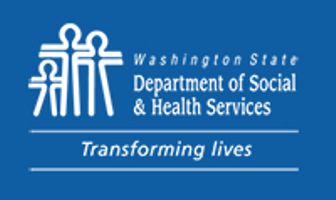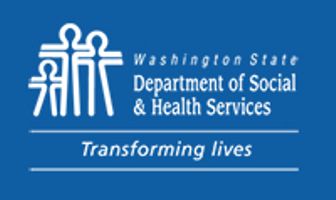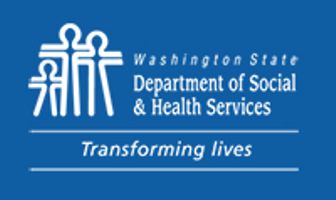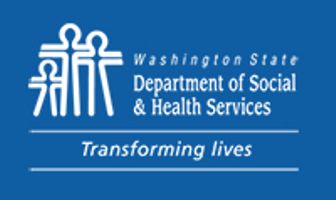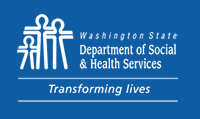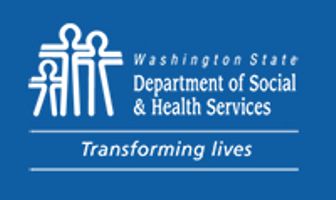Title Page
-
Conducted on
-
Prepared by
-
Location
-
Detailed Location
- AT Bldg/TX Mall
- GPU Food Service West Lake / Pod H
- 3N1 APU
- GPU Pod HMH
- 1S1 FSU
- GPU Pod B
- Food Service East Lake-both levels
- 1N1 APU
- GPU Pod D
- 2N1 APU
- FSU/APU/AT Bldg Yard Spaces/Sidewalks
- 2S1 FSU
- GPU Pod E
- Dental Office 0N3 / Psychology Area
- 2N3 FSU
- GPU Lab
- Pharmacy
- GPU OT and Rehab Areas
- 3S1 FSU
- HR / IT / Safety Offices / Rehab Offices / ETRU
- Security / PERT /Social Work / FSU Psychology Area / Med Staff Office
- Medical Records / SB / Accounting-includes patient funds /Admin / CNO /
- Educational Services
- 0N3 Offices / Central Supply / Housekeeping / Basement Corridor / QM
- GPU Common areas
-
Safety 1. In controlled building areas where friable asbestos containing materials exist, appropriate warning labels and signage is present (e.g. ceiling spaces, boiler rooms, tunnels, crawl spaces, etc.)?
-
What is the likelihood to harm a patient / staff / Visitor?
- High: Could directly lead to harm without need for other significant circumstances or failures.--Likely
- Moderate: Could cause harm directly, but more likely to cause harm as a contributing factor in the presence of special circumstances or additional failures.--Possible
- Low: Undermines safety/quality or contributes to an unsafe environment, but very unlikely to directly contribute to harm.--Rare
-
Is the problem…
- Widespread: issue is “pervasive at the organization” --Process failure/systemic failure --Majority of patients are/could be impacted
- Pattern: issue has potential to “impact more than a limited number of patients impacted” -- Process variation -- > or = 3 but less than 50% patients impacted
- Limited: issue is a “unique occurrence” -- Outlier -- Not representative of routine/regular practice
-
Safety 2. Areas are clean and free of offensive odors?
-
What is the likelihood to harm a patient / staff / Visitor?
- High: Could directly lead to harm without need for other significant circumstances or failures.--Likely
- Moderate: Could cause harm directly, but more likely to cause harm as a contributing factor in the presence of special circumstances or additional failures.--Possible
- Low: Undermines safety/quality or contributes to an unsafe environment, but very unlikely to directly contribute to harm.--Rare
-
Is the problem…
- Widespread: issue is “pervasive at the organization” --Process failure/systemic failure --Majority of patients are/could be impacted
- Pattern: issue has potential to “impact more than a limited number of patients impacted” -- Process variation -- > or = 3 but less than 50% patients impacted
- Limited: issue is a “unique occurrence” -- Outlier -- Not representative of routine/regular practice
-
Safety 3. Emergency access is provided for all locked and occupied spaces? (e.g. patient bathrooms, seclusion rooms, etc.)
-
What is the likelihood to harm a patient / staff / Visitor?
- High: Could directly lead to harm without need for other significant circumstances or failures.--Likely
- Moderate: Could cause harm directly, but more likely to cause harm as a contributing factor in the presence of special circumstances or additional failures.--Possible
- Low: Undermines safety/quality or contributes to an unsafe environment, but very unlikely to directly contribute to harm.--Rare
-
Is the problem…
- Widespread: issue is “pervasive at the organization” --Process failure/systemic failure --Majority of patients are/could be impacted
- Pattern: issue has potential to “impact more than a limited number of patients impacted” -- Process variation -- > or = 3 but less than 50% patients impacted
- Limited: issue is a “unique occurrence” -- Outlier -- Not representative of routine/regular practice
-
Safety 4. Emergency eyewash and shower equipment is accessible, and inspected/tested monthly?
-
What is the likelihood to harm a patient / staff / Visitor?
- High: Could directly lead to harm without need for other significant circumstances or failures.--Likely
- Moderate: Could cause harm directly, but more likely to cause harm as a contributing factor in the presence of special circumstances or additional failures.--Possible
- Low: Undermines safety/quality or contributes to an unsafe environment, but very unlikely to directly contribute to harm.--Rare
-
Is the problem…
- Widespread: issue is “pervasive at the organization” --Process failure/systemic failure --Majority of patients are/could be impacted
- Pattern: issue has potential to “impact more than a limited number of patients impacted” -- Process variation -- > or = 3 but less than 50% patients impacted
- Limited: issue is a “unique occurrence” -- Outlier -- Not representative of routine/regular practice
-
Safety 5. Area staff are familiar with the location and use of emergency eyewash and shower equipment?
-
What is the likelihood to harm a patient / staff / Visitor?
- High: Could directly lead to harm without need for other significant circumstances or failures.--Likely
- Moderate: Could cause harm directly, but more likely to cause harm as a contributing factor in the presence of special circumstances or additional failures.--Possible
- Low: Undermines safety/quality or contributes to an unsafe environment, but very unlikely to directly contribute to harm.--Rare
-
Is the problem…
- Widespread: issue is “pervasive at the organization” --Process failure/systemic failure --Majority of patients are/could be impacted
- Pattern: issue has potential to “impact more than a limited number of patients impacted” -- Process variation -- > or = 3 but less than 50% patients impacted
- Limited: issue is a “unique occurrence” -- Outlier -- Not representative of routine/regular practice
-
Safety 6. Medical gas cylinders are properly secured when in use, in storage and in transport?
-
What is the likelihood to harm a patient / staff / Visitor?
- High: Could directly lead to harm without need for other significant circumstances or failures.--Likely
- Moderate: Could cause harm directly, but more likely to cause harm as a contributing factor in the presence of special circumstances or additional failures.--Possible
- Low: Undermines safety/quality or contributes to an unsafe environment, but very unlikely to directly contribute to harm.--Rare
-
Is the problem…
- Widespread: issue is “pervasive at the organization” --Process failure/systemic failure --Majority of patients are/could be impacted
- Pattern: issue has potential to “impact more than a limited number of patients impacted” -- Process variation -- > or = 3 but less than 50% patients impacted
- Limited: issue is a “unique occurrence” -- Outlier -- Not representative of routine/regular practice
-
Safety 7. If stored within the same enclosure, empty and partial medical gas cylinders are segregated from full cylinders and are marked to avoid confusion and delay?
-
What is the likelihood to harm a patient / staff / Visitor?
- High: Could directly lead to harm without need for other significant circumstances or failures.--Likely
- Moderate: Could cause harm directly, but more likely to cause harm as a contributing factor in the presence of special circumstances or additional failures.--Possible
- Low: Undermines safety/quality or contributes to an unsafe environment, but very unlikely to directly contribute to harm.--Rare
-
Is the problem…
- Widespread: issue is “pervasive at the organization” --Process failure/systemic failure --Majority of patients are/could be impacted
- Pattern: issue has potential to “impact more than a limited number of patients impacted” -- Process variation -- > or = 3 but less than 50% patients impacted
- Limited: issue is a “unique occurrence” -- Outlier -- Not representative of routine/regular practice
-
Safety 8. Blanket warming cabinet temperatures are maintained at or below 130F, logs are current and actions are documented for failed readings?
-
What is the likelihood to harm a patient / staff / Visitor?
- High: Could directly lead to harm without need for other significant circumstances or failures.--Likely
- Moderate: Could cause harm directly, but more likely to cause harm as a contributing factor in the presence of special circumstances or additional failures.--Possible
- Low: Undermines safety/quality or contributes to an unsafe environment, but very unlikely to directly contribute to harm.--Rare
-
Is the problem…
- Widespread: issue is “pervasive at the organization” --Process failure/systemic failure --Majority of patients are/could be impacted
- Pattern: issue has potential to “impact more than a limited number of patients impacted” -- Process variation -- > or = 3 but less than 50% patients impacted
- Limited: issue is a “unique occurrence” -- Outlier -- Not representative of routine/regular practice
-
Safety 9. Practices are in place to protect patient privacy and confidentiality?
-
What is the likelihood to harm a patient / staff / Visitor?
- High: Could directly lead to harm without need for other significant circumstances or failures.--Likely
- Moderate: Could cause harm directly, but more likely to cause harm as a contributing factor in the presence of special circumstances or additional failures.--Possible
- Low: Undermines safety/quality or contributes to an unsafe environment, but very unlikely to directly contribute to harm.--Rare
-
Is the problem…
- Widespread: issue is “pervasive at the organization” --Process failure/systemic failure --Majority of patients are/could be impacted
- Pattern: issue has potential to “impact more than a limited number of patients impacted” -- Process variation -- > or = 3 but less than 50% patients impacted
- Limited: issue is a “unique occurrence” -- Outlier -- Not representative of routine/regular practice
-
Safety 10. Smoking:▪ Facility's smoking policy is effectively enforced▪Appropriate ""NO SMOKING" signage is posted
-
What is the likelihood to harm a patient / staff / Visitor?
- High: Could directly lead to harm without need for other significant circumstances or failures.--Likely
- Moderate: Could cause harm directly, but more likely to cause harm as a contributing factor in the presence of special circumstances or additional failures.--Possible
- Low: Undermines safety/quality or contributes to an unsafe environment, but very unlikely to directly contribute to harm.--Rare
-
Is the problem…
- Widespread: issue is “pervasive at the organization” --Process failure/systemic failure --Majority of patients are/could be impacted
- Pattern: issue has potential to “impact more than a limited number of patients impacted” -- Process variation -- > or = 3 but less than 50% patients impacted
- Limited: issue is a “unique occurrence” -- Outlier -- Not representative of routine/regular practice
-
Safety 11. A minimum of 18" clearance is maintained between fire sprinkler heads and adjacent storage?
-
What is the likelihood to harm a patient / staff / Visitor?
- High: Could directly lead to harm without need for other significant circumstances or failures.--Likely
- Moderate: Could cause harm directly, but more likely to cause harm as a contributing factor in the presence of special circumstances or additional failures.--Possible
- Low: Undermines safety/quality or contributes to an unsafe environment, but very unlikely to directly contribute to harm.--Rare
-
Is the problem…
- Widespread: issue is “pervasive at the organization” --Process failure/systemic failure --Majority of patients are/could be impacted
- Pattern: issue has potential to “impact more than a limited number of patients impacted” -- Process variation -- > or = 3 but less than 50% patients impacted
- Limited: issue is a “unique occurrence” -- Outlier -- Not representative of routine/regular practice
-
Safety 12. Empty patient rooms are not used for the storage of combustible materials?
-
What is the likelihood to harm a patient / staff / Visitor?
- High: Could directly lead to harm without need for other significant circumstances or failures.--Likely
- Moderate: Could cause harm directly, but more likely to cause harm as a contributing factor in the presence of special circumstances or additional failures.--Possible
- Low: Undermines safety/quality or contributes to an unsafe environment, but very unlikely to directly contribute to harm.--Rare
-
Is the problem…
- Widespread: issue is “pervasive at the organization” --Process failure/systemic failure --Majority of patients are/could be impacted
- Pattern: issue has potential to “impact more than a limited number of patients impacted” -- Process variation -- > or = 3 but less than 50% patients impacted
- Limited: issue is a “unique occurrence” -- Outlier -- Not representative of routine/regular practice
-
Safety 13. Nurse-call emergency pull stations comply with the following:▪ Equipped with pull cords that do not pose a ligature risk▪ Pull cords not long than 6
-
What is the likelihood to harm a patient / staff / Visitor?
- High: Could directly lead to harm without need for other significant circumstances or failures.--Likely
- Moderate: Could cause harm directly, but more likely to cause harm as a contributing factor in the presence of special circumstances or additional failures.--Possible
- Low: Undermines safety/quality or contributes to an unsafe environment, but very unlikely to directly contribute to harm.--Rare
-
Is the problem…
- Widespread: issue is “pervasive at the organization” --Process failure/systemic failure --Majority of patients are/could be impacted
- Pattern: issue has potential to “impact more than a limited number of patients impacted” -- Process variation -- > or = 3 but less than 50% patients impacted
- Limited: issue is a “unique occurrence” -- Outlier -- Not representative of routine/regular practice
-
Safety 14. Wall mounted projections into corridors ≥ 6 feet wide:▪ Project no more than 6" into the corridor▪ Are no more than 36" wide ▪ Are installed at least 48" apart▪ Are installed above handrail height
-
What is the likelihood to harm a patient / staff / Visitor?
- High: Could directly lead to harm without need for other significant circumstances or failures.--Likely
- Moderate: Could cause harm directly, but more likely to cause harm as a contributing factor in the presence of special circumstances or additional failures.--Possible
- Low: Undermines safety/quality or contributes to an unsafe environment, but very unlikely to directly contribute to harm.--Rare
-
Is the problem…
- Widespread: issue is “pervasive at the organization” --Process failure/systemic failure --Majority of patients are/could be impacted
- Pattern: issue has potential to “impact more than a limited number of patients impacted” -- Process variation -- > or = 3 but less than 50% patients impacted
- Limited: issue is a “unique occurrence” -- Outlier -- Not representative of routine/regular practice
-
Safety 15. If you are injured at work , what do you do?
-
What is the likelihood to harm a patient / staff / Visitor?
- High: Could directly lead to harm without need for other significant circumstances or failures.--Likely
- Moderate: Could cause harm directly, but more likely to cause harm as a contributing factor in the presence of special circumstances or additional failures.--Possible
- Low: Undermines safety/quality or contributes to an unsafe environment, but very unlikely to directly contribute to harm.--Rare
-
Is the problem…
- Widespread: issue is “pervasive at the organization” --Process failure/systemic failure --Majority of patients are/could be impacted
- Pattern: issue has potential to “impact more than a limited number of patients impacted” -- Process variation -- > or = 3 but less than 50% patients impacted
- Limited: issue is a “unique occurrence” -- Outlier -- Not representative of routine/regular practice
-
Safety 16. Where do you the UOR report and Form 133?
-
What is the likelihood to harm a patient / staff / Visitor?
- High: Could directly lead to harm without need for other significant circumstances or failures.--Likely
- Moderate: Could cause harm directly, but more likely to cause harm as a contributing factor in the presence of special circumstances or additional failures.--Possible
- Low: Undermines safety/quality or contributes to an unsafe environment, but very unlikely to directly contribute to harm.--Rare
-
Is the problem…
- Widespread: issue is “pervasive at the organization” --Process failure/systemic failure --Majority of patients are/could be impacted
- Pattern: issue has potential to “impact more than a limited number of patients impacted” -- Process variation -- > or = 3 but less than 50% patients impacted
- Limited: issue is a “unique occurrence” -- Outlier -- Not representative of routine/regular practice
General Comments Not Included in the Checklist
-
Safety 17. Do you have any additional comments? If so, please add them here.
-
Add media
